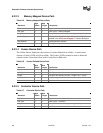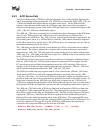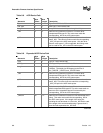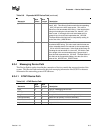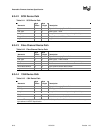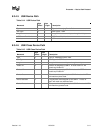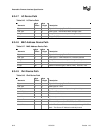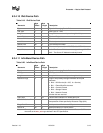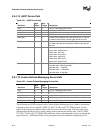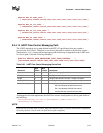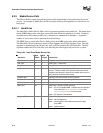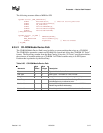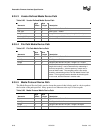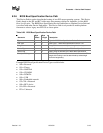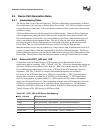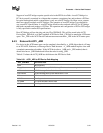
Extensible Firmware Interface Specification
8-14 12/01/02 Version 1.10
8.3.4.12 UART Device Path
Table 8-21. UART Device Path
Mnemonic
Byte
Offset
Byte
Length
Description
Type 0 1 Type 3 – Messaging Device Path
Sub-Type 1 1 Sub-Type 14 – UART
Length 2 2 Length of this structure in bytes. Length is 19 bytes.
Reserved 4 4 Reserved
Baud Rate 8 8 The baud rate setting for the UART style device. A value of
0 means that the device's default baud rate will be used.
Data Bits 16 1 The number of data bits for the UART style device. A value
of 0 means that the device's default number of data bits will
be used.
Parity 17 1 The parity setting for the UART style device.
Parity 0x00 - Default Parity
Parity 0x01 - No Parity
Parity 0x02 - Even Parity
Parity 0x03 - Odd Parity
Parity 0x04 - Mark Parity
Parity 0x05 - Space Parity
Stop Bits 18 1 The number of stop bits for the UART style device.
Stop Bits 0x00 - Default Stop Bits
Stop Bits 0x01 - 1 Stop Bit
Stop Bits 0x02 - 1.5 Stop Bits
Stop Bits 0x03 - 2 Stop Bits
8.3.4.13 Vendor-Defined Messaging Device Path
Table 8-22. Vendor-Defined Messaging Device Path
Mnemonic
Byte
Offset
Byte
Length
Description
Type 0 1 Type 3 – Messaging Device Path
Sub-Type 1 1 Sub-Type 10 – Vendor
Length 2 2 Length of this structure in bytes. Length is 20 + n bytes.
Vendor_GUID 4 16 Vendor-assigned GUID that defines the data that follows
Vendor Defined Data 20 n Vendor-defined variable size data
The following two GUIDs are used with a Vendor-Defined Messaging Device Path to describe the
transport protocol for use with PC-ANSI, VT-100, VT-100+, and VT-UTF8 terminals. Device
paths can be constructed with this node as the last node in the device path. The rest of the device
path describes the physical device that is being used to transmit and receive data. The PC-ANSI,
VT-100, VT-100+, and VT-UTF8 GUIDs define the format of the data that is being sent though the
physical device. Additional GUIDs can be generated to describe additional transport protocols.



